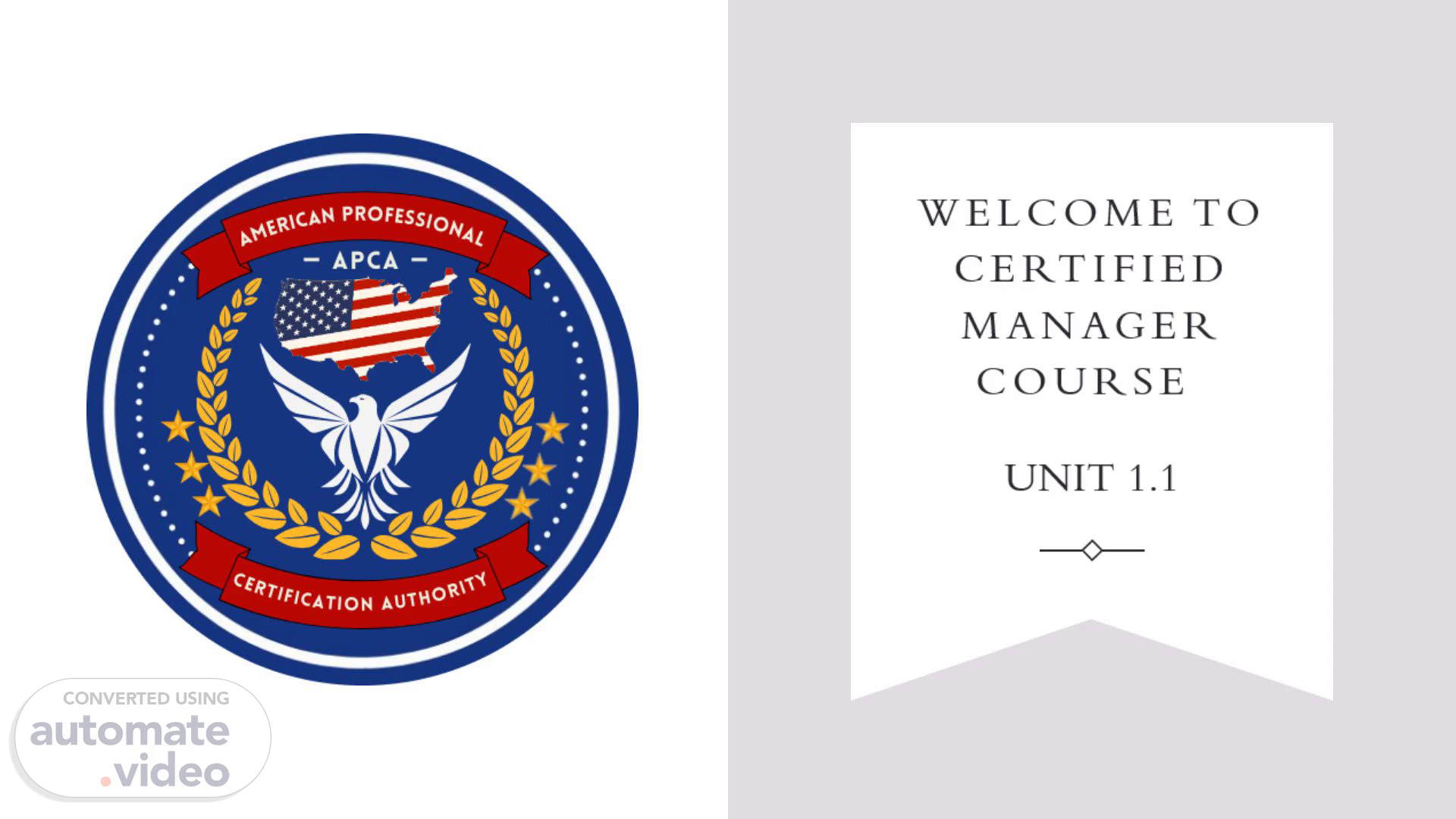
Welcome to certified manager course
Scene 1 (0s)
[Audio] WELCOME TO CERTIFIED MANAGER COURSE UNIT 1.1.
Scene 2 (10s)
[Audio] Let's start with Definition and Evolution of Management Management is a dynamic and multifaceted discipline that has evolved over centuries, adapting to the changing needs of organizations and the broader business environment. Its definition has transformed from simple coordination to a complex process involving planning, organizing, leading, and controlling resources to achieve organizational goals. To comprehend the evolution of management, it is crucial to trace its development through different eras..
Scene 3 (43s)
[Audio] 1. Pre-Industrial Revolution: Management practices in pre-industrial societies were informal and primarily focused on small-scale agricultural and craft-based activities. Hierarchical structures were minimal, and decision-making was often centralized within family units or small communities. There was a lack of formalized management theories. 2. Industrial Revolution and Scientific Management: The Industrial Revolution marked a significant shift in the nature of work, with the emergence of factories and mass production. During this period, Frederick Taylor introduced Scientific Management, emphasizing efficiency, standardization, and specialization. Taylor's principles sought to maximize productivity by analyzing and optimizing work processes. However, criticisms arose regarding the dehumanizing effects on workers..
Scene 4 (1m 42s)
[Audio] 3. Classical Management Theories: The early 20th century witnessed the development of classical management theories by Henri Fayol and Max Weber. Fayol's principles included functions like planning, organizing, coordinating, and controlling, forming the foundation for modern management. Weber introduced the concept of bureaucracy, emphasizing a formalized organizational structure with clear roles and responsibilities. 4. Human Relations Movement: The Hawthorne studies in the 1920s brought attention to the social and psychological aspects of work. Researchers discovered that employee productivity was influenced by factors beyond physical conditions, leading to the Human Relations Movement. This perspective highlighted the importance of social interactions, motivation, and employee satisfaction..
Scene 5 (2m 39s)
[Audio] 5. Management Science and Systems Theory: Post-World War II, management saw the integration of mathematical models and quantitative techniques. Management Science emerged, applying mathematical tools to decision-making processes. Additionally, systems theory viewed organizations as complex, interconnected systems, influencing management practices to consider the interdependencies within an organization. 6. Contingency Theory and Total Quality Management: Contingency theory, popularized in the 1960s, recognized that there is no one-size-fits-all approach to management. Effective management practices depend on the specific situation. Total Quality Management (TQM) gained prominence in the 1980s, focusing on continuous improvement, customer satisfaction, and employee involvement. 7. Modern Management and Strategic Management: The latter part of the 20th century and the early 21st century witnessed the rise of modern management practices. Strategic management became a dominant force, emphasizing long-term planning, competitive advantage, and adaptability to external changes. This era saw the rise of leadership theories, such as transformational and situational leadership..
Scene 6 (4m 9s)
[Audio] Let's Discuss a Case Study on Google's Evolution of Management Google, a company that has transformed the digital landscape, provides a compelling case study of the evolution of management. In its early years, Google embraced a flat organizational structure, encouraging a culture of innovation and collaboration. This reflected the principles of the Human Relations Movement, emphasizing the importance of social interactions and a positive work environment. As Google expanded globally, it incorporated elements of contingency theory, adapting its management practices to different cultural and market contexts. The company's commitment to Total Quality Management is evident in its emphasis on user experience and continuous improvement of its products and services..
Scene 7 (4m 58s)
[Audio] In recent years, Google's management practices have been shaped by modern and strategic management principles. The company focuses on long-term goals, disruptive innovation, and maintaining a competitive edge in the rapidly changing technology landscape. Leadership at Google has evolved to embrace a more flexible and adaptive approach, aligning with contemporary theories that recognize the dynamic nature of today's business environment. In conclusion, the definition and evolution of management have been shaped by a variety of theories and perspectives, each responding to the needs and challenges of its time. The case of Google illustrates how a company can integrate and adapt various management theories to create a dynamic and successful organizational culture in the ever-changing landscape of the business world..